Welcome to your burns NCLEX questions and reviewer. In this nursing test bank, we’ll test your knowledge of burn injury nursing management concepts. This NCLEX quiz aims to help student nurses prepare and review the nursing care of patients with burn injuries.
Burns NCLEX Practice Quiz
This section includes the NCLEX practice questions for burns. This nursing test bank set includes 100 practice questions for burns divided into five (5) parts.
Quiz Guidelines
Before you start, here are some examination guidelines and reminders you must read:
- Practice Exams: Engage with our Practice Exams to hone your skills in a supportive, low-pressure environment. These exams provide immediate feedback and explanations, helping you grasp core concepts, identify improvement areas, and build confidence in your knowledge and abilities.
- Challenge Exams: Take our Challenge Exams to test your mastery and readiness under simulated exam conditions. These exams offer a rigorous question set to assess your understanding, prepare you for actual examinations, and benchmark your performance.
- You’re given 2 minutes per item.
- For Challenge Exams, click on the “Start Quiz” button to start the quiz.
- Complete the quiz: Ensure that you answer the entire quiz. Only after you’ve answered every item will the score and rationales be shown.
- Learn from the rationales: After each quiz, click on the “View Questions” button to understand the explanation for each answer.
- Free access: Guess what? Our test banks are 100% FREE. Skip the hassle – no sign-ups or registrations here. A sincere promise from Nurseslabs: we have not and won’t ever request your credit card details or personal info for our practice questions. We’re dedicated to keeping this service accessible and cost-free, especially for our amazing students and nurses. So, take the leap and elevate your career hassle-free!
- Share your thoughts: We’d love your feedback, scores, and questions! Please share them in the comments below.
Quizzes included in this guide are:
Burns Nursing Management Reviewer
Burns. A burn is an injury that results from direct exposure to any thermal, electrical, chemical, or radiation source. It occurs when energy from a heat source is transferred into body tissues beyond what the body could hold, leading to tissue injury. It is characterized by severe skin damage that causes the affected skin cells to die.
Types of Burns
There are many other causes of burns aside from open flames. They include:
- Thermal burns. A thermal burn is a burn to the skin caused by any external heat source like a flame, hot liquids, or hot metals.
- Chemical burns. A chemical burn can be caused by many substances, such as strong acids, drain cleaners (lye), paint thinner, and gasoline that touches your skin can cause it to burn.
- Radiation burns. A radiation burn is the least common type. Sunburn is a type of radiation burn and other exposure to nuclear radiation, like X-rays or radiation therapy to treat cancer, can also cause these.
- Electrical burns. An electrical burn occurs when the skin comes into contact with an electrical current and it passes through the body from faulty electrical wiring.
- Friction burns. A friction burn occurs when a hard object rubs off some of the skin. It’s both an abrasion or scrape and a heat burn just like motorcycle and bike accidents and a carpet burn.
- Cold burns. A cold burn also called “frostbite” occurs when the skin comes into direct contact with something very cold for a prolonged period of time.
- Inhalation injury. An inhalation injury is caused by smoke associated with flame injury or inhaled carbon monoxide which is a by-product of incomplete combustion.
Signs and Symptoms of Burn Injury
Local Response
The three zones of a burn were described by Jackson in 1947. These three zones of a burn are three-dimensional, and loss of tissue in the zone of stasis will lead to the wound deepening and widening. (National Center for Biotechnology Information, U.S. National Library of Medicine)
- Zone of coagulation. This occurs at the point of maximum damage to the area of the burn tissue. In this zone, there is irreversible tissue loss due to the coagulation of the constituent proteins.
- Zone of stasis. The surrounding zone of stasis is characterized by decreased tissue perfusion. The tissue in this zone is potentially salvageable. The main aim of burns resuscitation is to increase tissue perfusion here and prevent any damage from becoming irreversible. Additional insults—such as prolonged hypotension, infection, or edema—can convert this zone into an area of complete tissue loss.
- Zone of hyperemia. In this outermost zone tissue perfusion is increased. The tissue here will invariably recover unless there is severe sepsis or prolonged hypoperfusion.
Systemic response
The release of cytokines and other inflammatory mediators at the injury site has a systemic effect once the burn reaches 30% of the total body surface area.
- Cardiovascular changes. Due to fluid loss from the burn wound, it results in systemic hypotension, increased heart rate, and end organ hypoperfusion.
- Respiratory changes. Hyperventilation and increased respiratory rate occur. Inflammatory mediators cause bronchoconstriction, and in severe burns adult respiratory distress syndrome can occur.
- Metabolic changes. The basal metabolic rate increases up to three times its original rate. For severely burned patients, the resting metabolic rate at thermal neutral temperature (30°C) tops 140% of predicted basal rate on admission, reduces to 130% once the wounds are fully healed, then to 120% at 6 months after injury.
- Immunological changes. Non-specific down regulation of the immune response occurs, affecting both cell mediated and humoral pathways.
- Electrolyte imbalances. Hyponatremia and hyperkalemia occur. Hyponatraemia is frequent, and the restoration of sodium losses in the burn tissue is therefore essential. Hyperkalemia is also characteristic during this time because of the massive tissue necrosis. Hyponatraemia (Na) (< 135 mEq/L) is due to extracellular sodium depletion following changes in cellular permeability.
- Psychological responses. Effects on psychological health includes shock, numbness, disbelief, depression, denial, mourning, perceived losses.
Management of Burn Injury
Management of burn injury is categorized into three phases of care: emergent phase, acute phase, and rehabilitation.
Emergent Phase
The emergent phase starts from the time of burn injury and ends when the patient is hemodynamically stable, capillary permeability has been restored, and fluid resuscitation has been completed. Usually 48-72 hours from the time of injury. The emergent phase is also known as the resuscitative phase, and the goals of this phase include prevention of hypovolemic shock and preservation of vital organ functioning.
Asses for the burn depth.
Burn depth is assessed 24 hours after injury as blisters and other injuries may evolve.
First Degree Burn (Superficial Partial Thickness Burn). In first-degree burn injuries, the skin function remains intact, and transfer to a burn center is not required. They do NOT count towards total body surface area (TBSA) burned. This classification of burn depth affects the epidermis leading to the following signs and symptoms:
- Erythema
- Edema
- Pain but without blisters
- Fluid loss is MILD
Second Degree Burn (Deep Partial Thickness Burn). In second-degree burn injuries, the skin function is lost. Deep partial-thickness injuries can easily convert to or require the same management as full-thickness. An MCI (mass casualty incident) aims to treat as many 2nd degree injuries as possible in an outpatient setting. This classification of burn depth affects the dermis and epidermis, leading to the following signs and symptoms:
- Erythema
- Edema
- Pain with blisters
- Pink to reddish skin
- Fluid loss is MODERATE
Third-Degree Burn (Full Thickness Burn). In third-degree burn injuries, skin function is lost, and grafting is required for functional healing. Third-degree burns will almost always require hospital admission. This classification of burn depth affects the subcutaneous tissues, epidermis, and dermis leading to:
- Pearly white or charred appearance of the skin
- Mottled brown, black, or red burn site
- Pain is absent
- Fluid loss is SEVERE
Fourth-Degree Burn (Deep Fullness Thickness Burn). In fourth-degree burn injuries, the affected areas go through both layers of the skin and underlying tissue as well as deeper tissue. This classification of burn depth involves muscle and bone.
- Burned part is black/charred
- Fluid loss is VERY SEVERE
Assess the burn size and extent.
The size of the burn is expressed through percentage according to the total body surface area (TBSA), Rule of Nines.
- Small Burns (<25%). Response of the body is localized.
- Large Burns (>25%). Response of the body is systemic.
Assess for the burn location.
The area of a burn injury usually directs treatment. Burns on the face, hands, feet, and genitalia, as well as large burns in other areas of the body and those associated with inhalation injury, are often referred to burn centers for specialized expertise.
- Head, Neck, and Chest. Respiratory
- Face. Corneal ulceration
- Perineum. Contaminated with urine and feces
- Circumferential Burns of Extremities. Compromis circulation
Airway Management
Airway Management is vital to maintain the airway and provide supplemental oxygen in patients with major burns. Airway management is crucial for types of burns related to inhalation injury.
- Oxygenation: CO2 poisoning. 100% of oxygen is delivered via a tight-fitting non-rebreather mask until carbon monoxide falls to 15%.
- Mechanical ventilator as indicated.
- Endotracheal suctioning.
- Head of the bed is elevated to facilitate maximum expansion of the lungs.
Fluid Resuscitation
Fluid Resuscitation refers to replacing fluids in burn patients to prevent hypovolemia and hypoperfusion that can result from the body’s systemic response to burn injury.
- Initiate fluid administration. Peripheral IV access may initially be used though in larger and more severe cases of burns, a central venous access is recommended as a large volume of fluid is required.
- Use American Burn Association (ABA) guidelines for fluid resuscitation. The formula for the total fluid requirement in 24 hours is as follows: 4ml x TBSA (%) x body weight (kg). [Example: Patient weighs 80 kg with TSBA of 20% = 4mL x 80 kg = 320 x 20 = 6,400 mL]
- First half of the solution is given in the first 8 hours (3,200 mL)
- One quarter of the solution is given in the second 8 hours (1,600 mL)
- Another quarter of the solution is given in the third 8 hours (1,600 mL)
- Avoid colloid-containing solution for the first 24 hours because it may aggravate edema due to an increase in capillary permeability.
- The amount of fluid in the second 24 hours will depend on the patient’s urine output and hemodynamic studies (Hct, CVP, and BUN/Crea)
- Colloid-containing solutions may be given with D5W with glucose.
- Monitor urine output. A urine output of 0.5 to 1 mL/kg/h is used as an indication of appropriate resuscitation in thermal and chemical injuries. In electrical injuries, a urine output of 75 to 100 mL/h is the goal.
Diet
The larger the burn size, the more nutrients are needed for healing.
- Provide additional calories. Patients need more calories than normal when they’re recovering from a burn injury. That’s why nutrition is a major component of burn treatment. A diet high in calories and protein supports the immune system to decrease risk of infection; helps wounds heal faster; maintains muscle mass; and minimizes weight loss to support rehabilitation.
Pain Management
Pain due to burns can range from mild to severe to excruciating. Pain management, which includes pharmacologic and nonpharmacologic approaches, is a central component of the complex issues involved in treating patients with burns.
- NO intramuscular or subcutaneous administration because the patient is hypovolemic.
- Intravenous analgesics: Morphine, Demerol
- Oral administration is NOT considered due to GI dysfunction.
- Minor burns: per orem
- Nonpharmacological: Deep breathing exercises, guided imagery
Wound Care
Prescribed topical agents are administered before the wound is covered with layers of dry dressings.
- Use ointments. Antibiotic ointments or creams are frequently used to fight or treat infections in patients with second-degree burns. Using these ointments may require the use of bandages.
- Regularly change dressings. Dressings may need to be changed regularly. The skin and the burn wound should be washed gently with mild soap and rinsed well with tap water. Use a soft wash cloth or piece of gauze to gently remove old medications.
Acute Phase
The acute phase of burn management starts 48-72 hours from the burn injury when the patient is hemodynamically stable with completed fluid resuscitation and restored capillary permeability and ends upon wound closure.
Prevent infection. Patients with burns are at the highest risk for healthcare-associated infections (HAIs). The loss of the skin’s barrier function, combined with necrotic tissue, produces an environment conducive to bacterial growth. Nursing interventions to prevent infection includes:
- Watch out for signs of infection. Erythema, warmth, malodorous exudates, and tenderness.
- Initiate universal precaution. Use of gowns, gloves, and eye protection. Including frequent hand hygiene.
- Wound culture and antimicrobial therapy. Culture and sensitivity is usually ordered on admission for patients with burns to test for presence of MRSA.
- Wound care. Early excision and closure of the burn wound helps in preventing infection.
- Control of hyperglycemia. Insulin is indicated (even without diabetes) for severely burned patients to improve protein synthesis, attenuate lean body mass loss, decrease hypermetabolism, and accelerate donor healing time.
Provide nutritional support. Nutritional support through total parenteral nutrition or enteral tube feeding for patients with burns is aggressive. There should be an increase in calories, proteins, and fats.
Provide proper wound care. Wound cleansing should be done through hydrotherapy and maybe submerged in a Hubbard tank.
Wound Cleansing
- Wound cleansing through hydrotherapy
- Patient is submerged in Hubbard Tank
- Involves immersion, spray, or showering 30 minutes or less.
- More than 30 minutes can cause heat loss, pain, and stress.
- Analgesics before the procedure.
Debridement is the removal of necrotic tissues to prevent bacterial growth-promoting wound healing.
- Mechanical Debridement. Involves the use of forceps and scissors to trim away loose necrotic tissues.
- Enzymatic Debridement. Involves the use of proteolytic or fibriolytic enzymes to digest necrotic tissues.
- Surgical Debridement. Involves excision of loose necrotic tissues.
Antimicrobial Agents or Ointments
- Silver Sulfadiazine. Once or twice daily.
- Open Method. The wound is left exposed to air after application.
- Close method. Sterile gauze is impregnated.
Surgical Management
Autografting. Autografting is the surgical removal of a superficial layer of the patient’s own unburned skin (donor site) which is subsequently grafted to the patient’s excised open wound.
Post Op Considerations:
- Promote graft adherence through immobilization
- Bed rest for 10 days
- Keep graft site free from pressure
- Avoid weight-bearing activities
- To remove exudate, roll a cotton tip applicator
- Watch out for foul smelling discharge. It may indicate infection.
- As prescribed, small amount of blood may be removed beneath the grafted skin by rolling gauze from the center to the periphery where the blood can be absorbed by the sterile gauze.
- Aspirate if with large amount of blood using a small gauge needle as prescribed by the physician.
- Apply cocoa butter to prevent dryness.
Rehabilitation Phase
The rehabilitation phase occurs immediately after the burn has occurred and can extend for years after the initial injury.
- Minimize functional loss. Burn rehabilitation includes rehabilitation programs to help return the patients to their highest level of function within the content of their injuries.
- Provide psychosocial support. Includes counseling, patient teaching, and help the patient reintegrate with society through various programs aimed at burn survivors.
Recommended Resources
Recommended books and resources for your NCLEX success:
Disclosure: Included below are affiliate links from Amazon at no additional cost from you. We may earn a small commission from your purchase. For more information, check out our privacy policy.
Saunders Comprehensive Review for the NCLEX-RN
Saunders Comprehensive Review for the NCLEX-RN Examination is often referred to as the best nursing exam review book ever. More than 5,700 practice questions are available in the text. Detailed test-taking strategies are provided for each question, with hints for analyzing and uncovering the correct answer option.
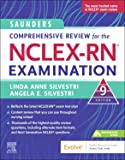
Strategies for Student Success on the Next Generation NCLEX® (NGN) Test Items
Next Generation NCLEX®-style practice questions of all types are illustrated through stand-alone case studies and unfolding case studies. NCSBN Clinical Judgment Measurement Model (NCJMM) is included throughout with case scenarios that integrate the six clinical judgment cognitive skills.
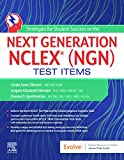
Saunders Q & A Review for the NCLEX-RN® Examination
This edition contains over 6,000 practice questions with each question containing a test-taking strategy and justifications for correct and incorrect answers to enhance review. Questions are organized according to the most recent NCLEX-RN test blueprint Client Needs and Integrated Processes. Questions are written at higher cognitive levels (applying, analyzing, synthesizing, evaluating, and creating) than those on the test itself.
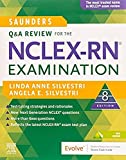
NCLEX-RN Prep Plus by Kaplan
The NCLEX-RN Prep Plus from Kaplan employs expert critical thinking techniques and targeted sample questions. This edition identifies seven types of NGN questions and explains in detail how to approach and answer each type. In addition, it provides 10 critical thinking pathways for analyzing exam questions.
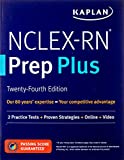
Illustrated Study Guide for the NCLEX-RN® Exam
The 10th edition of the Illustrated Study Guide for the NCLEX-RN Exam, 10th Edition. This study guide gives you a robust, visual, less-intimidating way to remember key facts. 2,500 review questions are now included on the Evolve companion website. 25 additional illustrations and mnemonics make the book more appealing than ever.
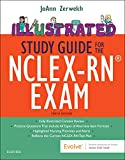
NCLEX RN Examination Prep Flashcards (2023 Edition)
NCLEX RN Exam Review FlashCards Study Guide with Practice Test Questions [Full-Color Cards] from Test Prep Books. These flashcards are ready for use, allowing you to begin studying immediately. Each flash card is color-coded for easy subject identification.
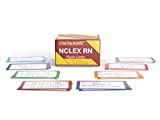
Recommended Links
An investment in knowledge pays the best interest. Keep up the pace and continue learning with these practice quizzes:
- Nursing Test Bank: Free Practice Questions UPDATED!
Our most comprehenisve and updated nursing test bank that includes over 3,500 practice questions covering a wide range of nursing topics that are absolutely free! - NCLEX Questions Nursing Test Bank and Review UPDATED!
Over 1,000+ comprehensive NCLEX practice questions covering different nursing topics. We’ve made a significant effort to provide you with the most challenging questions along with insightful rationales for each question to reinforce learning.

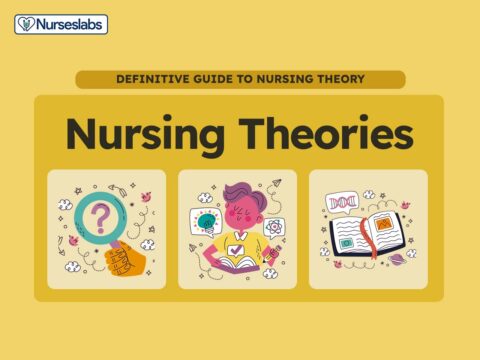
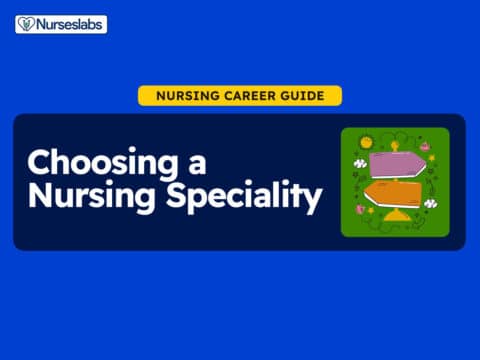
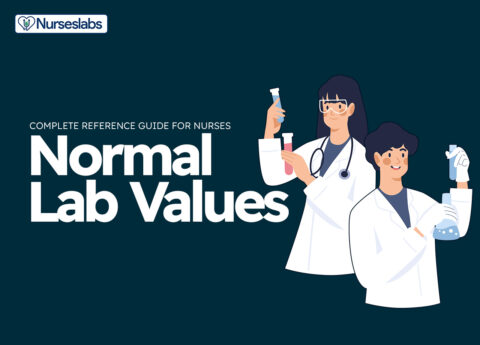



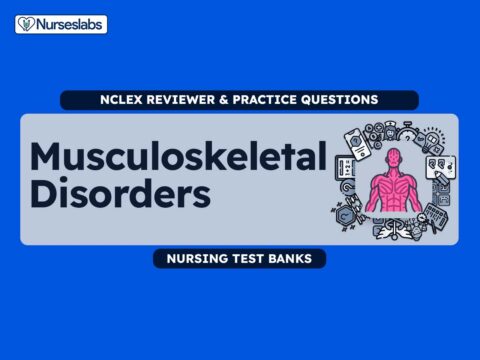


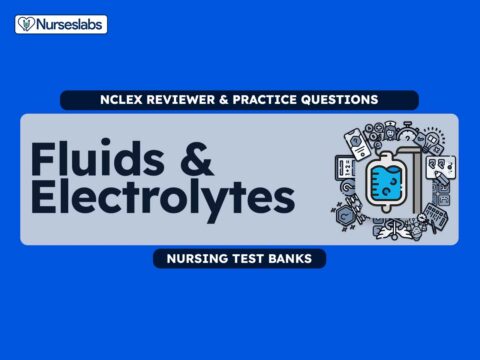
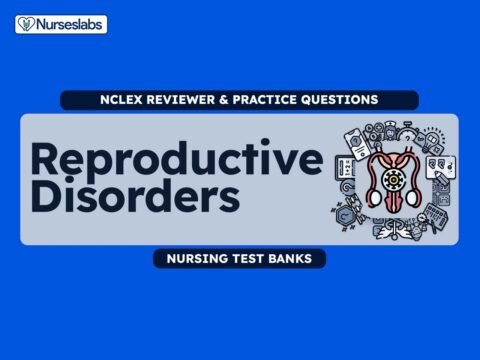
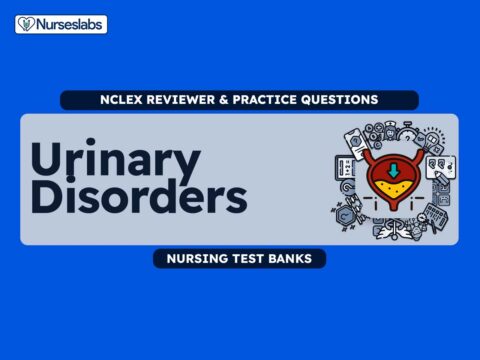
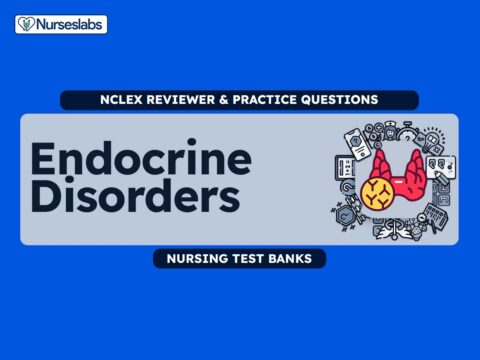
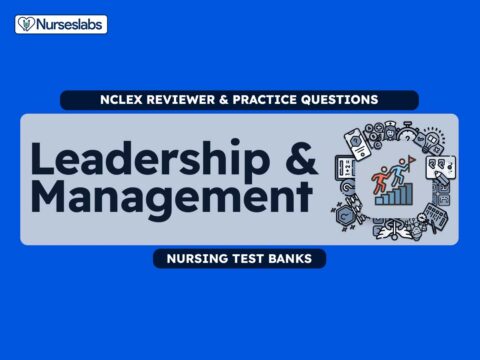

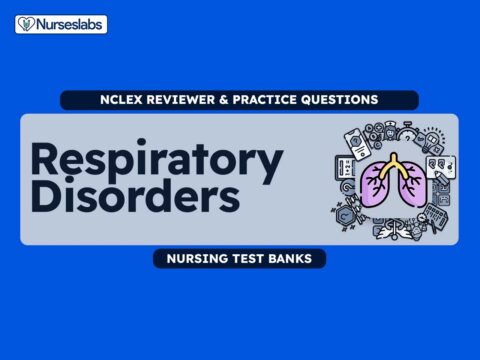




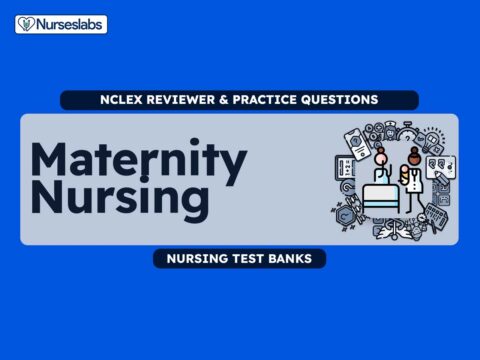

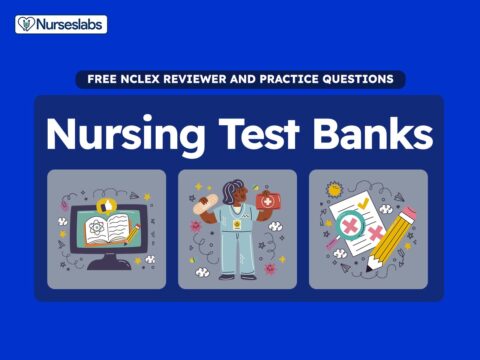

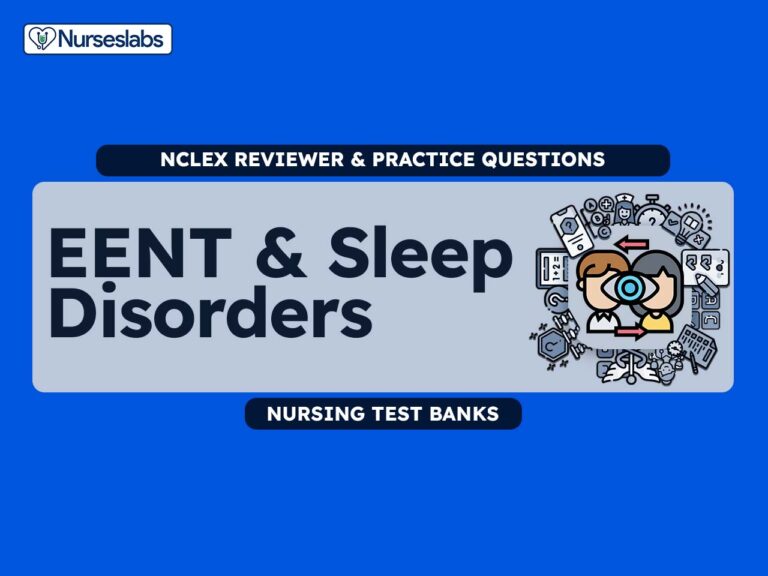


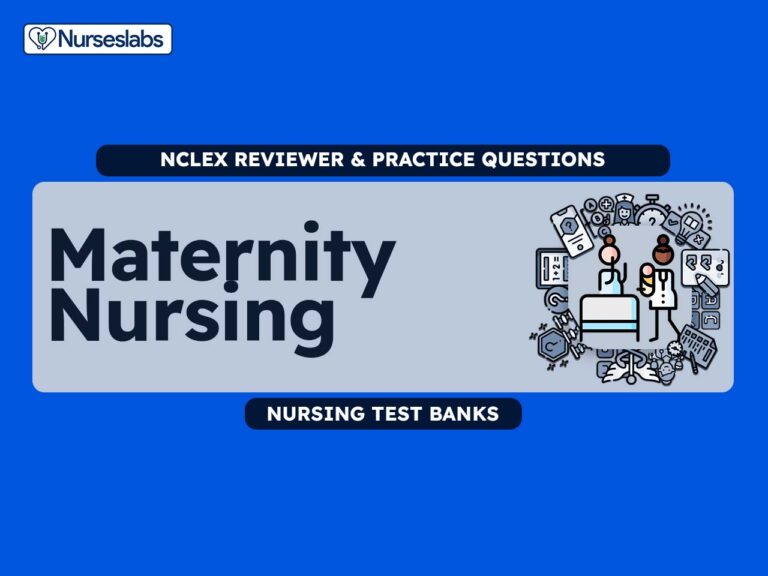

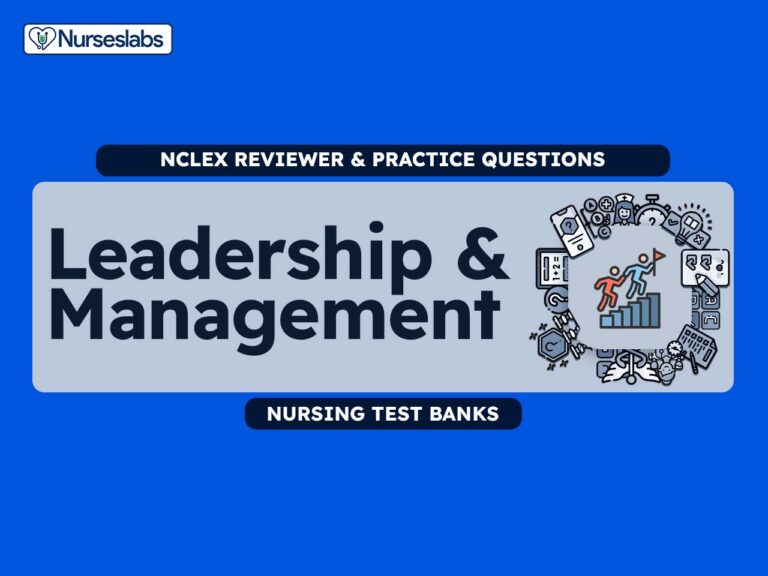

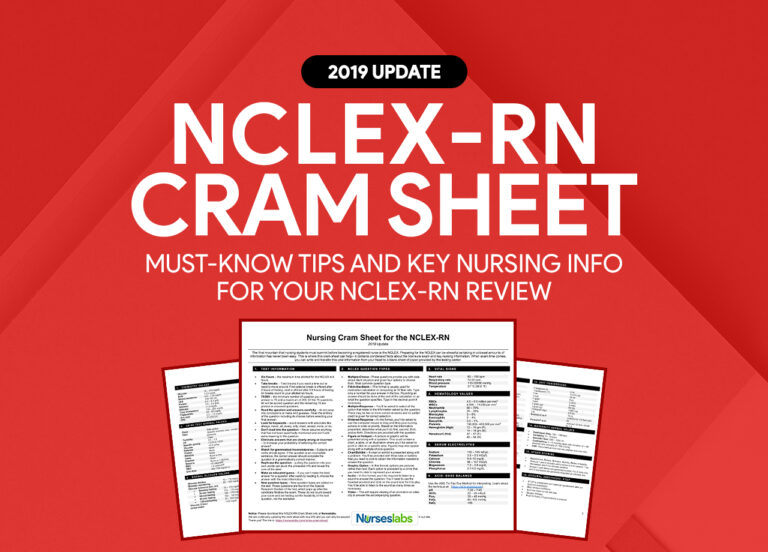
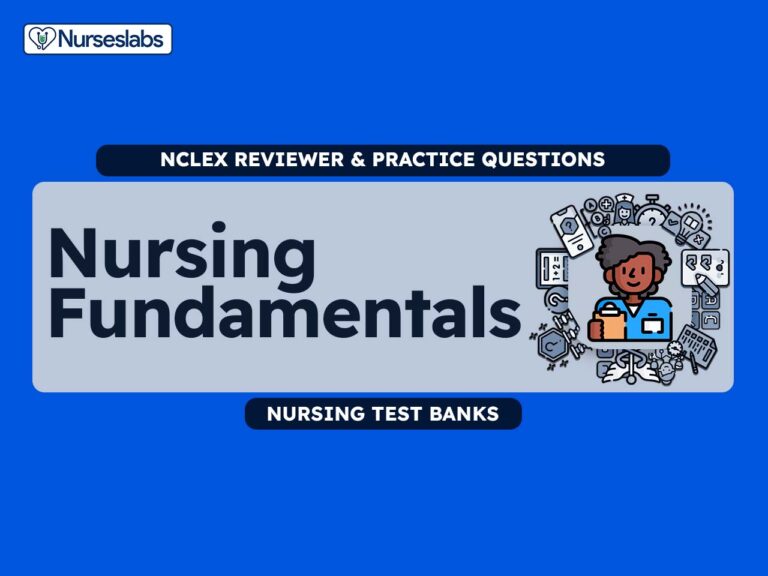
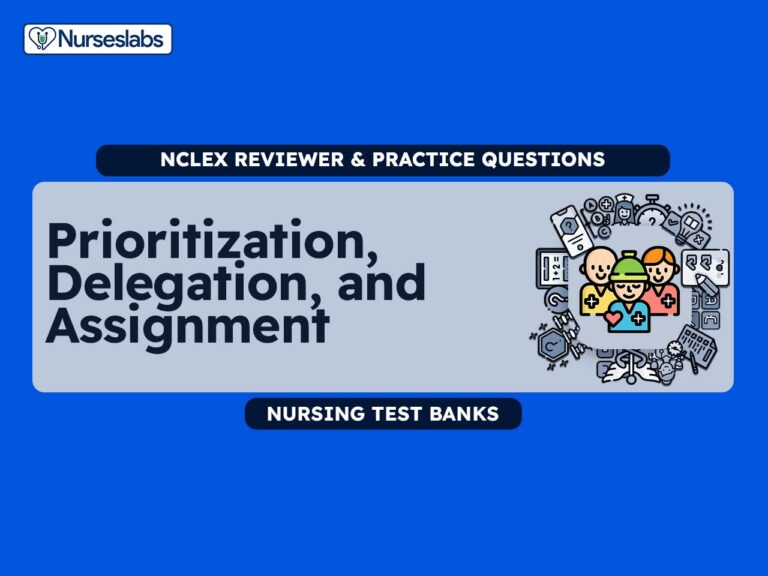
Leave a Comment